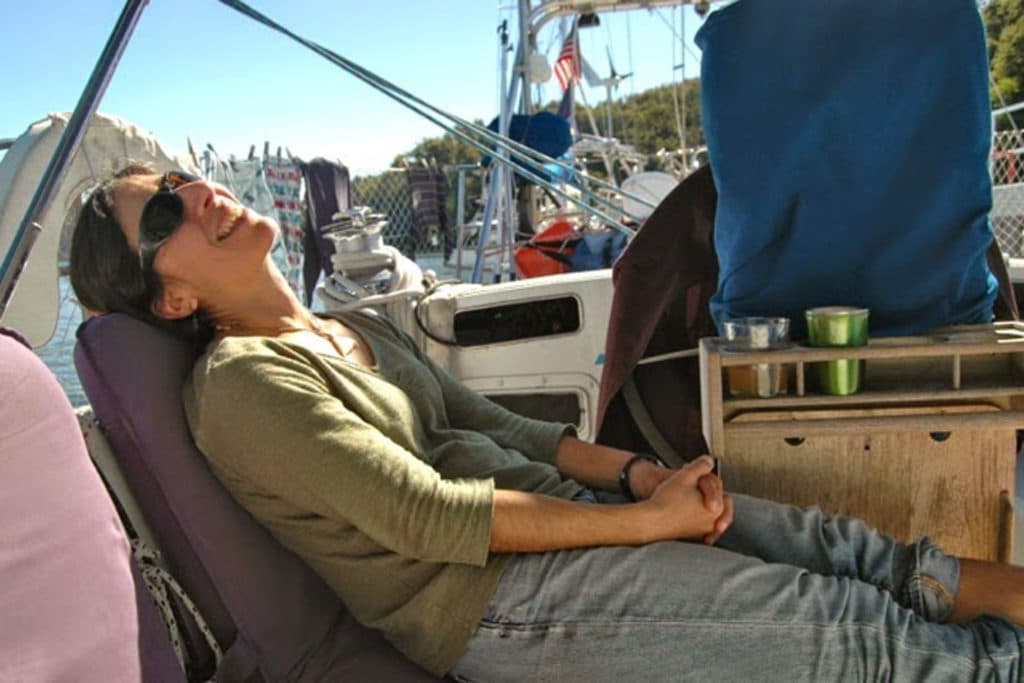40=?ISO-8859-1?Q?=B0?= S(pinnaker)
Monday, December 15, 2014
We crossed over the 40° line two days ago. Roaring Forties and all that jazz.
I would never be dismissive about the potential for bad weather in these latitudes. But so far, our biggest concern has been finding enough wind to keep the spinnaker drawing.
That cheery red and white sail has been our deliverance over the last two days, keeping Galactic moving in super-light winds and saving us from resorting to the engine and our low fuel tanks for forward progress. It’s dawn as I’m writing this, and we’ve just flown the chute all night. As a result Alisa and I took the novel step, on this passage at least, of standing watch and watch through the night. The radar alarm and AIS might be good at keeping a lookout for other vessels, but they can’t watch the spinnaker for us.
Through the years we’ve heard reports from other sailors about the delights of dumping the spinnaker into the ocean. We’ve always been a little curious, so two days ago we decided to see for ourselves what all the buzz was about.
I had left the spinnaker halyard wrapped around the self-tailing winch but neglected to make it fast to the cleat, and a shock load on the sail when Galactic rolled in the swell was enough to pop the halyard free.
The halyard is the line that holds the sail up to the top of the mast.
So the entire sail of super-light nylon dumped into the ocean. The sail that, by the way, cost more than twice as much as the truck that I drove in college.
One bit of luck was that the stopper knot on the end of the halyard got stuck beneath the lower spreaders, so after Alisa and I had wrestled the sail aboard I could just scramble up the mast steps to the spreader to retrieve the end of the halyard, instead of having to go all the way to the masthead for it.
No lasting damage, but there is little enthusiasm on board for a repeat.
Meanwhile, the vastness of this ocean is our constant companion – day after day, the endless expanse of sky and water continue to impress. We have had visits from albatross lately, all of them either tentatively or definitely identified as wandering albatross. The sight of a bird with a 3 meter wingspan, silently soaring around our boat on a sunny day while we glide along under spinnaker – it underscores the solitude of this place, and, after all the albatross that we’ve seen in recent years, it’s still a thrill that is worth the price of admission.
The boys continue doing pretty well on passage. Alisa comments on how completely new South America will be to us after the six years or so that we’ve spent in Polynesia and the southwest Pacific. And today we’ll have pancakes for breakfast, both our Sunday routine and the celebration of our second complete week at sea.
41=?ISO-8859-1?Q?=B0?= S(mooth)
Wednesday, December 17, 2014
Consider our situation. The three bits of land that are closest to us – Easter Island/Rapa Nui, the Juan Fernandez Islands and mainland Chile – are all more than 1,000 sea miles away. Any designs we may have had on a fast passage have been smothered by the area of high pressure that is slooooowly making its way over our position. The last time we took any diesel fuel aboard was in May, in Opua, New Zealand. Since then we’ve put 7,950 miles on the log(!), and the tanks are far too empty for us to blithely motor through the calms. Instead we’ve been living under the spinnaker, which we much prefer to motoring anyway.
Sometimes the chute pulls bravely and we make a fortune (6 knots in the right direction!) out of little breeze. Other times are like what we have now – not quite enough wind to keep the spinnaker full, and we’re making less than three knots heading a little north of east, which will tend to carry us deeper into the high.
When we do motor we keep the RPMs very low – just enough to move us at four knots or so – and as a result we sip at the fuel. But even so, we might only have 24 hours of motoring left to us, so making even imperfect progress under spinnaker welcome. But then the wind drops to the point where the chute starts flapping against the rig, and we have to consider the cost in terms of wear to the sail, or, much worse, the risk of a tear if the delicate fabric finds a sharp edge somewhere in all the fittings on the mast.
So that’s the game now – we consider the tradeoff between declining fuel and risk to the sail, and Alisa and I have had the chute up and down a score of times since the high caught us three or four days ago.
Early on in the passage we just set the sails and then held on while we ripped along. But this slower, more considered progress that we’ve been making lately has brought it home to me – this really is an adventure! No matter how many people who have done the trip before, no matter how commodotizied and normalized the activity might seem to us, it really is a big deal, sailing to South America with the family, across the bleedin’ Pacific Ocean and all. And then, when we get across this vast ocean, there is all of the unknown wonder that awaits us in Patagonia.
No wonder full-time sailors so famously have a hard time of it when they swallow the anchor and retire to life ashore. Most other ways of living would seem a bit pedestrian after this.
Meanwhile, the conditions during these days of slow sailing have been delightfully tranquil. It’s sunny, and after weeks of weather that spanned the gamut from drizzly to rainy, we have been lounging around in shorts. There is a three-meter or so swell rolling under us from the distant Southern Ocean. But the period of the swell is so long that we barely feel the motion. We just sit in the cockpit and watch the hills of water rolling up to us, and consider the strange sight of our stern rising to meet them, again and again. Two sunsets ago we watched one of the best green flashes we have yet seen. The sun looks bigger on this horizon than it does in the tropics, and the flash seemed to last much longer, perhaps because of the oblique angle at which the sun sets down here. A few breathless seconds after the first flash, we rose on the swell and saw a repeat performance.
Three to four weeks – that’s a lot of time to spend on just getting to the next place. But right now, there’s nowhere we’d rather be.
Baby, Can I Open the Duck?
Friday, December 19, 2014
“Who knew the Pacific was this wide?” I say to Alisa. “Who knew that we would want to eat all the way across?”
She lets me kid her that way. It’s part of our healthy marriage.
A while back – like, before we left the Gambier on this last leg – Alisa let something slip about her provisioning efforts in New Zealand before this Pacific crossing. It seems that she did the huge provisioning push – trip after trip to various stores – and then just got completely sick of shelling out the big dollars for Kiwi food prices. So when we were delayed in our departure by several weeks, not least because of her attack of the shingles, she never did another shop to replace the food we had been eating while still in New Zealand. All told, we ate into our stores for a month before we left.
That month of food would come in handy just about…now.
We won’t go hungry, mind. But cuisine might be a little basic between here and Chile.
It’s a big ol’ can of baked beans for dinner tonight, with rice. That will leave us with one more can of baked beans. After that’s gone, we’re presumably onto rice with rice.
“I’ve got a salad idea for tomorrow!” Alisa just said.
“Oh yeah, what’s that?” I asked.
“A can of beets,” she answered. “And I don’t know what else.”
More critically, we seem to be suddenly without enough butter to make Christmas cookies. It goes that way. When you get low on food, you suddenly start going through what you still do have extra-quickly. Alisa has been baking a ton on this trip – every other day, cake and/or cookies and two loaves of bread. So of course the butter went. And don’t ask about the ten dozen eggs we left Gambier with.
And I won’t even mention the beer situation. A week ago I tried hinting that any secret stash of beer that was set aside for the holiday might best be enjoyed immediately. No joy there.
We are all completely unfussed at the prospect of passing Christmas at sea. Alisa even has a canned duck set aside for Christmas dinner. But she did ask me the other day to let her know if and when I become confident that we’ll reach Valdivia before Christmas. She’s pretty keen to open the duck now.
The Most Accessible Adventure
Sunday, December 21, 2014
Tomorrow it will be three weeks since we set out on this crossing. Alisa and I have naturally been thinking a bit about stories of our sailing friends’ various passages, or the passages of friends of friends, or just passage stories that we’ve heard. The farther away the stories get from our ability to verify them, the better they are, not surprisingly.
At this point in our sailing career we’ve made a lot of passages ourselves, of course, and we are well enmeshed in this odd community of people who cross oceans in their own boats, often time after time. And it strikes me that there is no grander adventure that is accessible to the average person than this.
During this past season in French Polynesia, we came up with the outline of a route that would get us back to Alaska. Not too quickly, mind, as that route began with us sailing away from Alaska, and towards Patagonia. But we had an idea of what the end game might look like for closing out this endless tour of the Pacific that has occupied our last seven and a half years.
But yesterday Alisa said something along the lines of how we shouldn’t assume we know what route we’ll actually take. Who knows – Cuba is suddenly allowed to us, and I have great memories of traveling there with a friend in my pre-sailing days. “Maybe we’ll sail to Cuba,” I said.
“Yeah,” said Alisa. “Or maybe we’ll sail to South Africa and Madagascar and on to Oz. We could.”
So I guess the big-picture dreaminess has taken root on this passage. After three weeks out of sight of land we are far enough removed from anything that passes as normal life that we might be allowed a little “what-if” daydreaming. And although we have started to think about working our way back to the Great Land, we are both happy enough in this life to imagine wanting to keep going, life fundamentals and the funding of my science work allowing.
Meanwhile, we crossed paths with a small ship today. They weren’t running AIS, which is unusual for a ship of any sort, and I’m not sure that they weren’t a Chilean Armada vessel, as far off of the Chilean coast as we still are. A couple of attempts on the VHF in English got no response, so I got my first chance on this trip to try out some radio Spanish, which went as well as I could hope.
And since that moment of excitement, we’ve been dealing with fairly confounding conditions – light wind, and also quite variable wind, which is very unusual for offshore sailing, plus swell from two bad directions – straight from the beam and also on the bow. So the motion has been awkward, and we find ourselves banging along at 7 knots for a while, and then the sails slamming around in no wind not too long after. We made good traveling out of it for most of the day, but just now I’ve given up in the face of steadily declining winds. So we’re now motoring on the fumes of our keel tank (there are two inches in the port tank to get us into Valdivia) and with any luck the spinnaker will see us through whatever light winds await us tomorrow.
Well less than 500 miles to go now. It’s getting pretty cold – I’m still going barefoot on deck, but Eric has taken to putting on his Alaska-ready “goat-roper” hat and fingerless gloves and declaring, “Now I’m ready for Patagonia!”
Unless this light wind sticks around too long, we have a reasonable chance of a Chilean Christmas.
Three, or, Bang Into Chile
Christmas Eve, 2014
As our passage was drawing to an end I started to think about a summary blog post.
It would be called “Three” – a precious little something about having completed our third crossing of the Pacific. It would be a restrained post, mind you, but it would also derive too-obvious delight from the merit of its own restraint. We don’t think much about milestones on Galactic, but when you find yourself having sailed across the Pacific Ocean for the third time, you’re bound to reflect. That sort of thing.
Luckily, the life of those who go to sea for pleasure is too filled with the exigencies of the ridiculous to allow for much navel gazing.
What am I talking about? This.
The scene, last night. We had it in the bag. Ten o’clock on our 23rd day out from the Gambier. The boys safely tucked in their bunks. Forty miles remaining to our landfall in Bahia Corral, the gateway to Valdivia. The wind had fallen to the point where the spinnaker was flapping uselessly. But we had conserved our fuel, and could afford to motor the home stretch.
I turned on the engine. And heard a muted explosion in the engine room beneath me.
When I installed the shutoff valve on our exhaust to keep waves out of our engine, I neglected to design a fail-safe to protect against the inevitable time when I would forget to open the valve before starting the engine.
Last night, I forgot. So I blew up the muffler. Shards of fiberglass and oily water were splattered around the engine room, and a smoking hole sat where the muffler had been.
Instead of cake-walking into town, we found ourselves wondering how we’d get the engine running so that we could motor up the Valdivia River.
Against my every expectation, I managed to patch the muffler back together. Is there any at-sea repair that West System epoxy can’t do? But with the repair on top of the usual closing-the-coast vigilance, I got two hours of sleep last night, and Alisa three.
And then, suddenly, the passage was over. We were in Chile. The world of storm petrels and wandering albatross that we had inhabited only the day before was nothing but a dream. I found myself trying to make coherent answers in Spanish to the questions of very friendly officials. I kept saying our boat was 40 meters long instead of 14, or, when I was trying to be precise, 30.7 instead of 13.7. Big laughs every time.
And then, suddenly again, the whole family was in the back of a bus, barreling into town to get to the supermercado in time.
How did we get to Latin America? Alisa and I kept asking each other.
We were making our first visit to a supermarket in seven months exhausted, with few cultural points of reference to rely on, on the day before Christmas and three hours before closing time. The store was beyond crowded. People were queuing deep into the aisles to check out. I didn’t have my passport that I needed to pay with a credit card. It was all clearly madness.
And we all loved it all.
We came home with unimaginable bounty. Meat, cheese, potatoes, vegetables, beer, milk, wine. The canned duck will be spared to serve as the main course for some other holiday meal.
And, we all agree – it was one of our best passages ever.
Feliz Navidad.
Click here to read more of the Twice in a Lifetime blog.
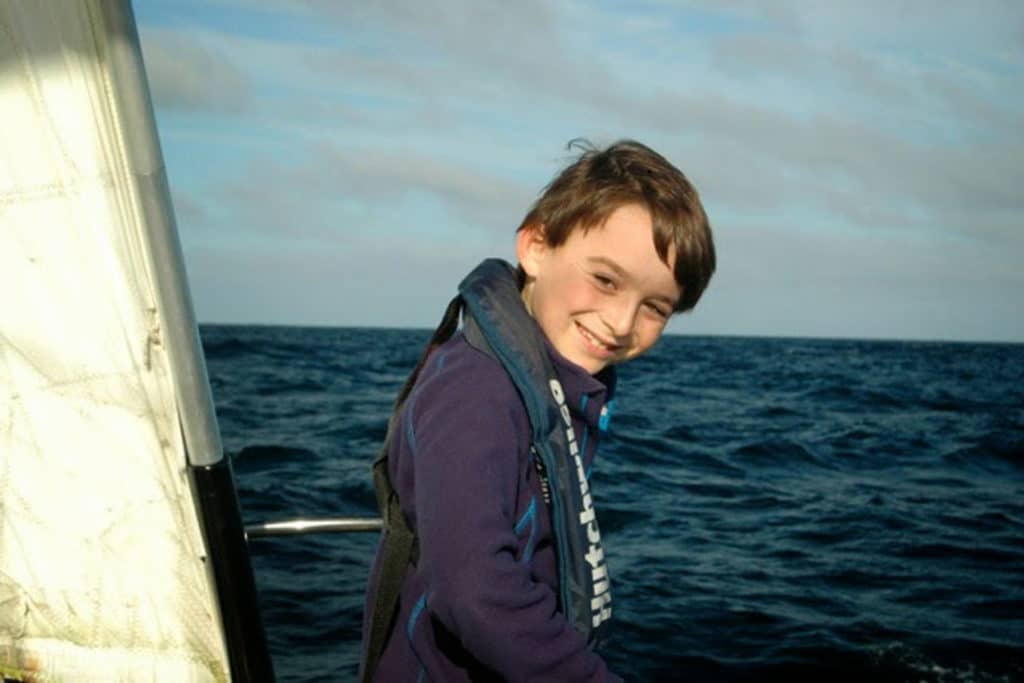
Eric Enjoying Sailing the Pacific
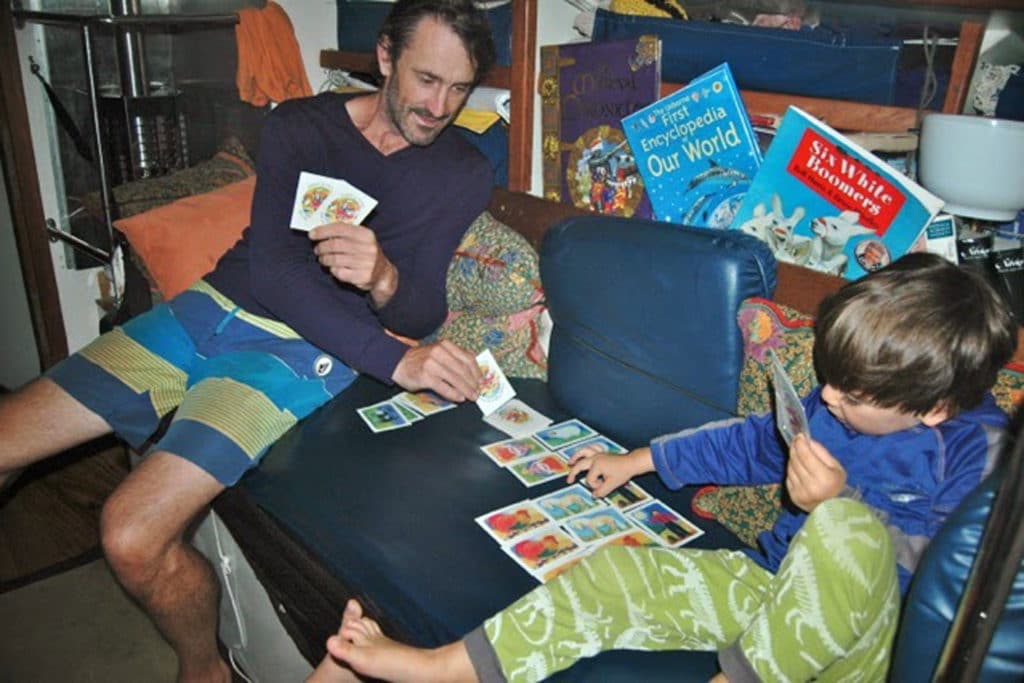
Sailing With Kids
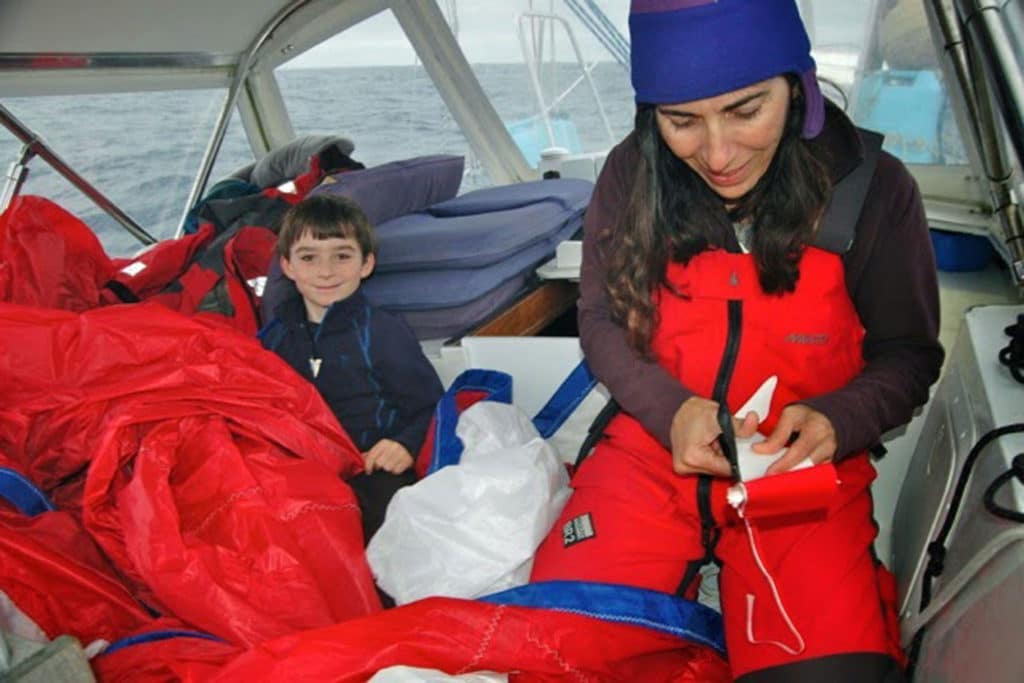
Sail Repair at Sea
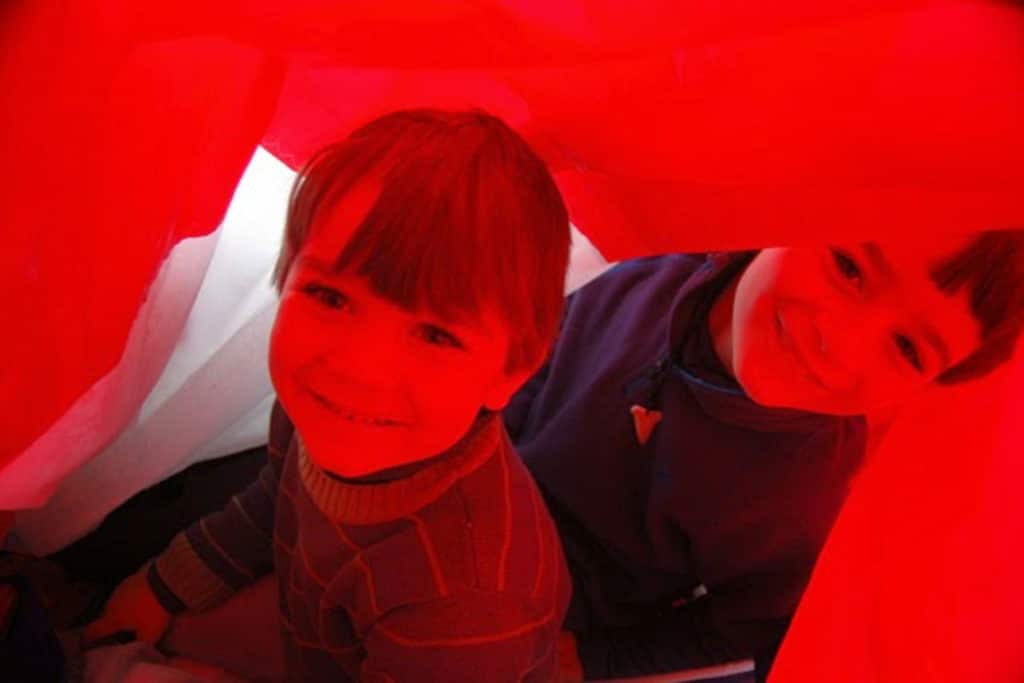
Kids Playing in Sails
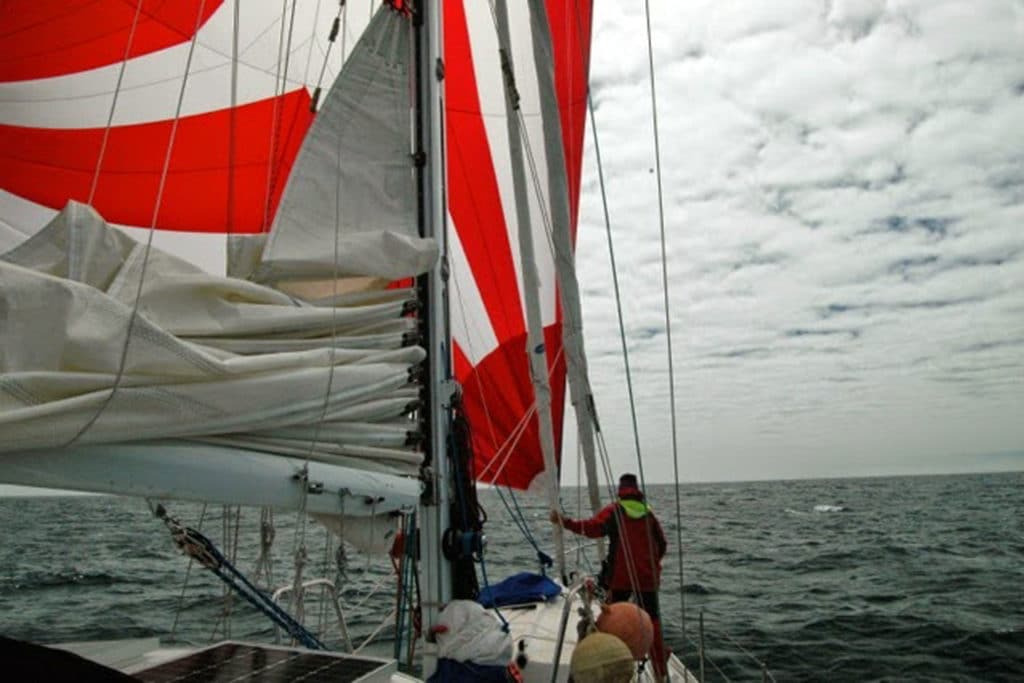
Sailing Under Spinnaker
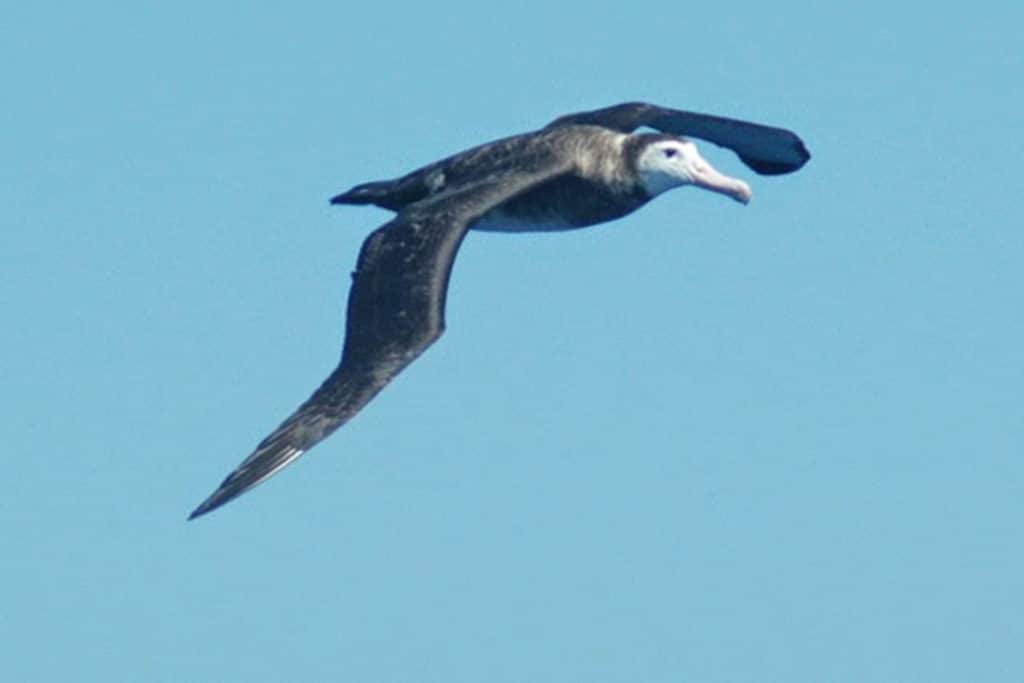
Juvenile wandering albatross
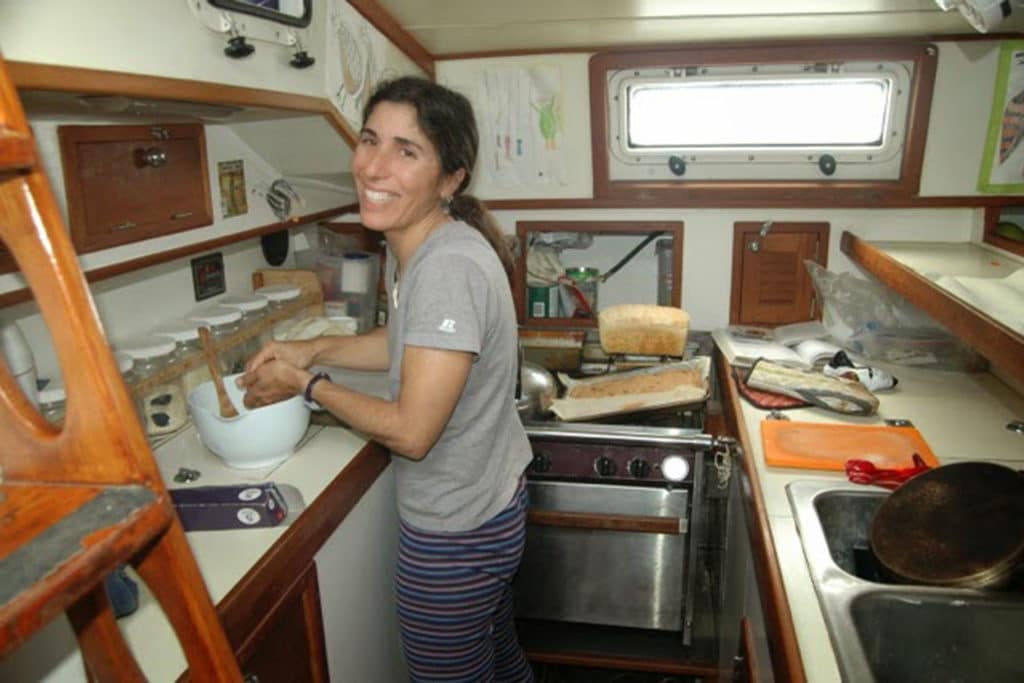
Baking on the Sailboat Galactic
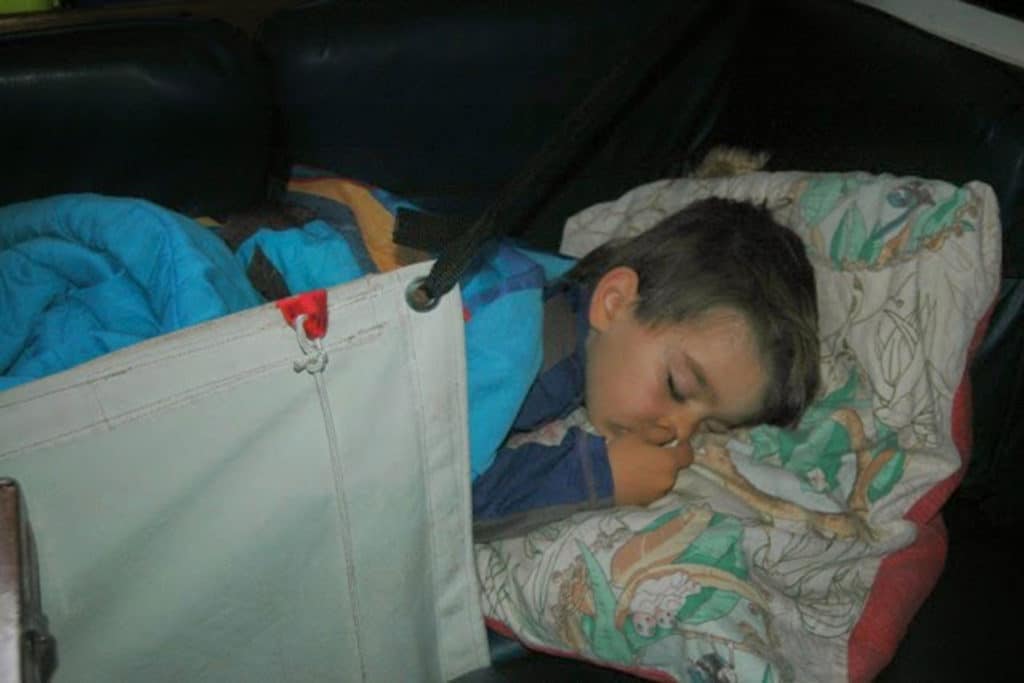
Lee Cloth
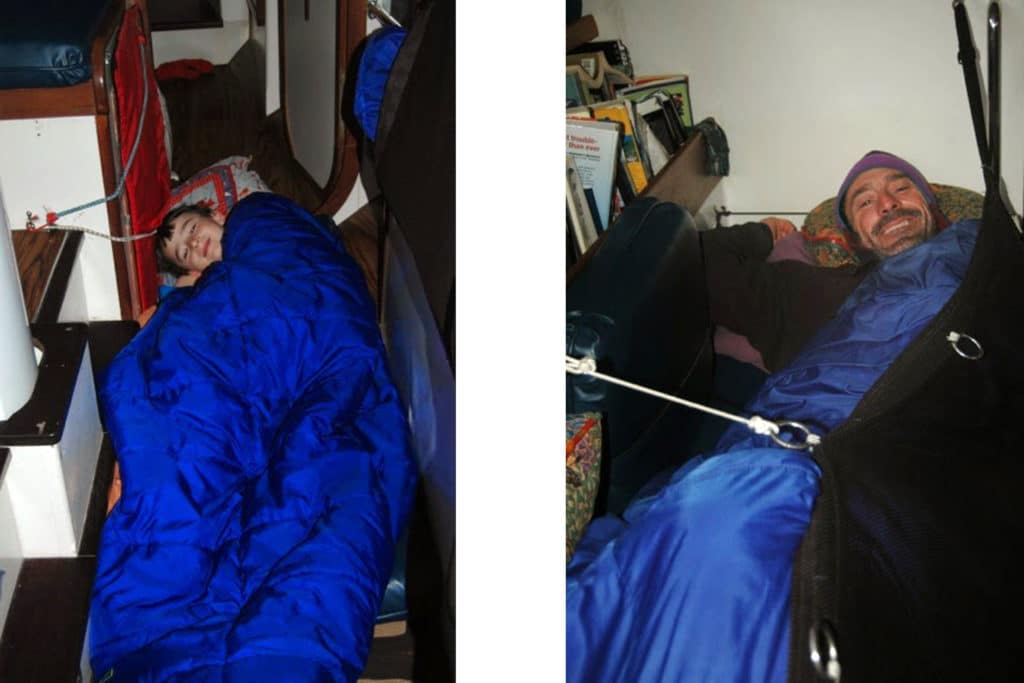
How to Sleep on a Sailboat
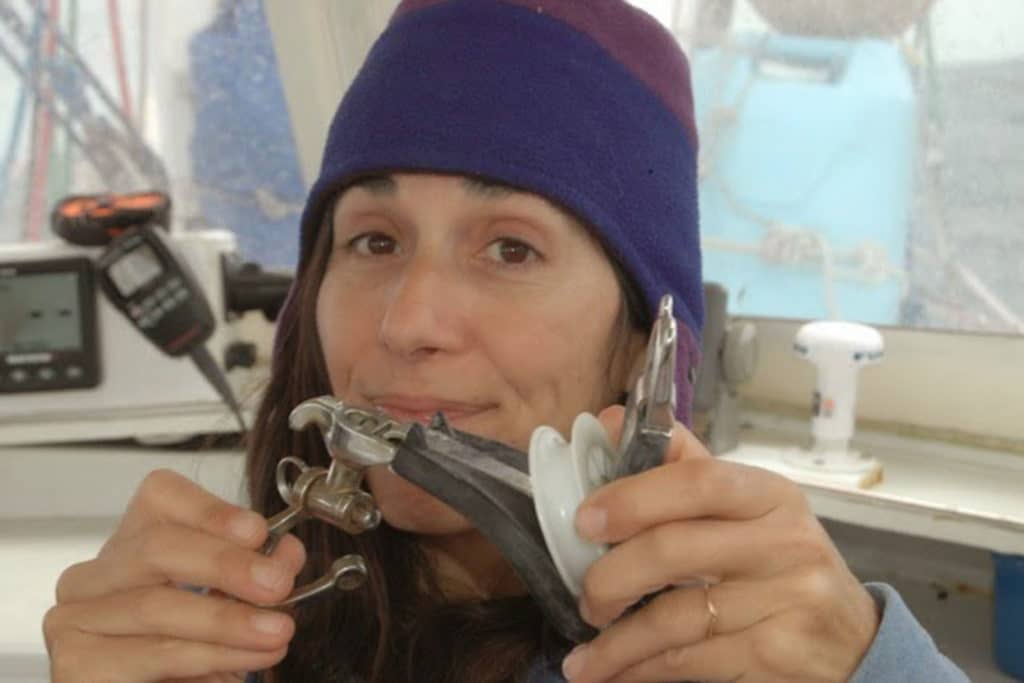
Bent Snatch Block
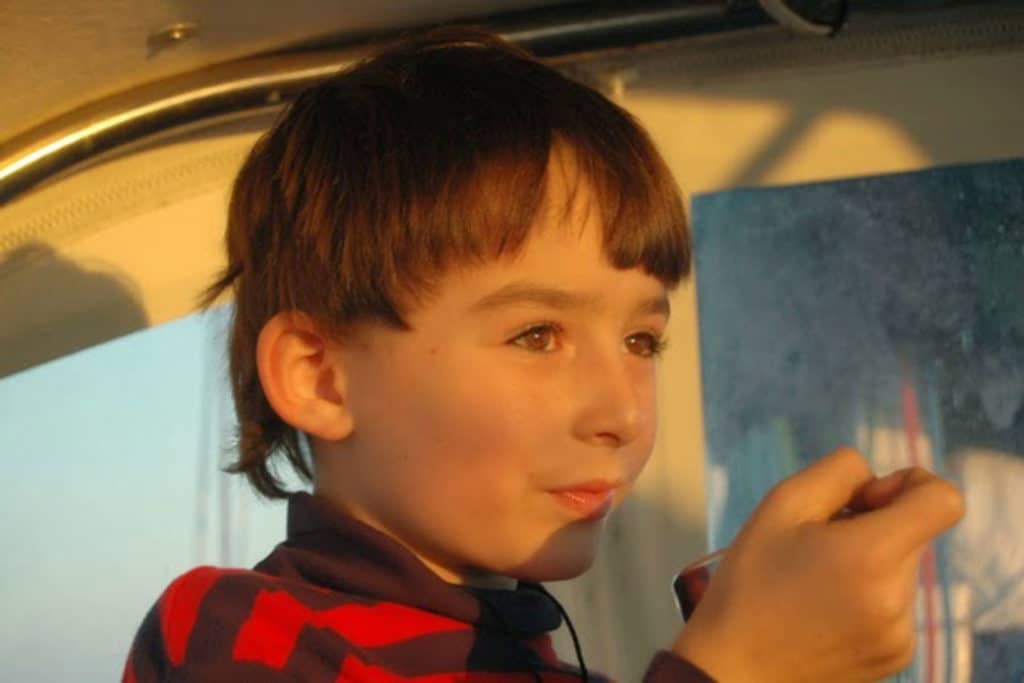
green flash
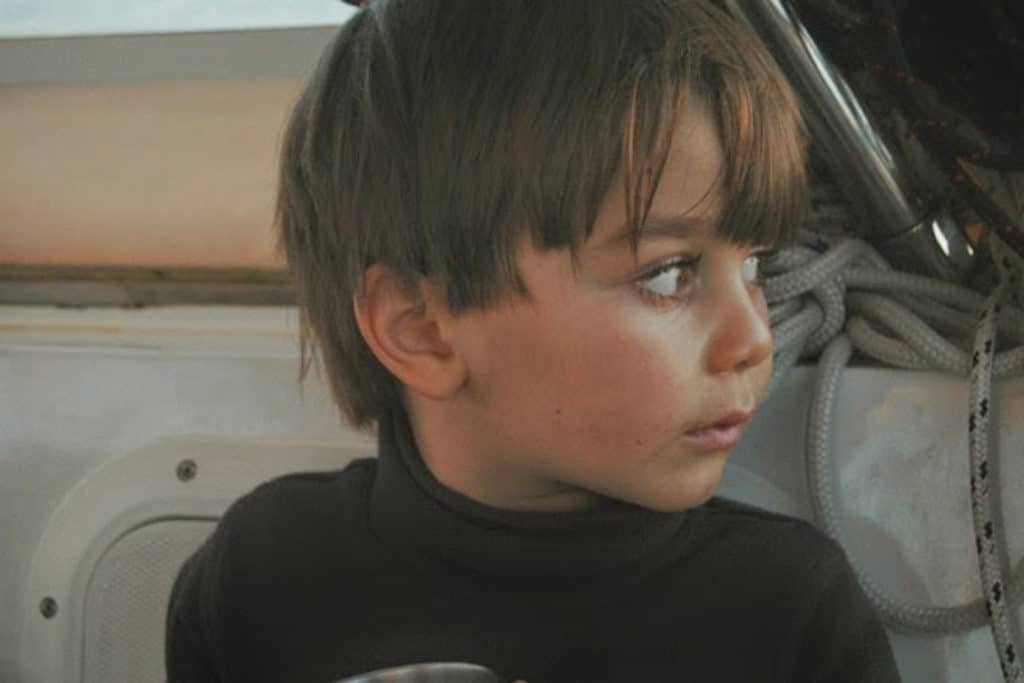
Sailing the Pacific With Kids
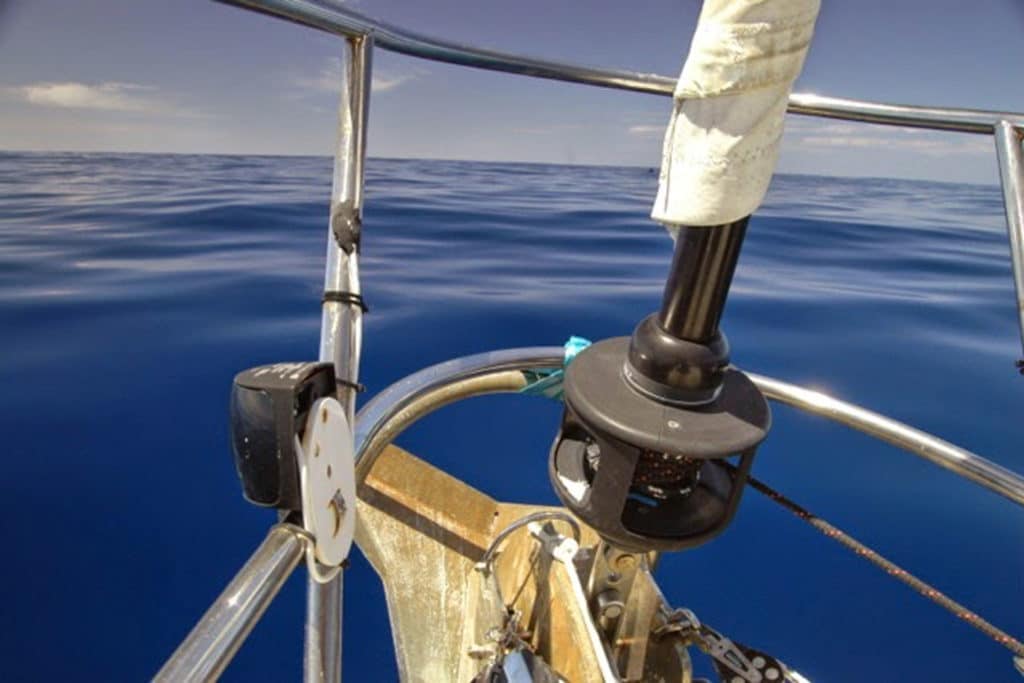
The dreaded calms
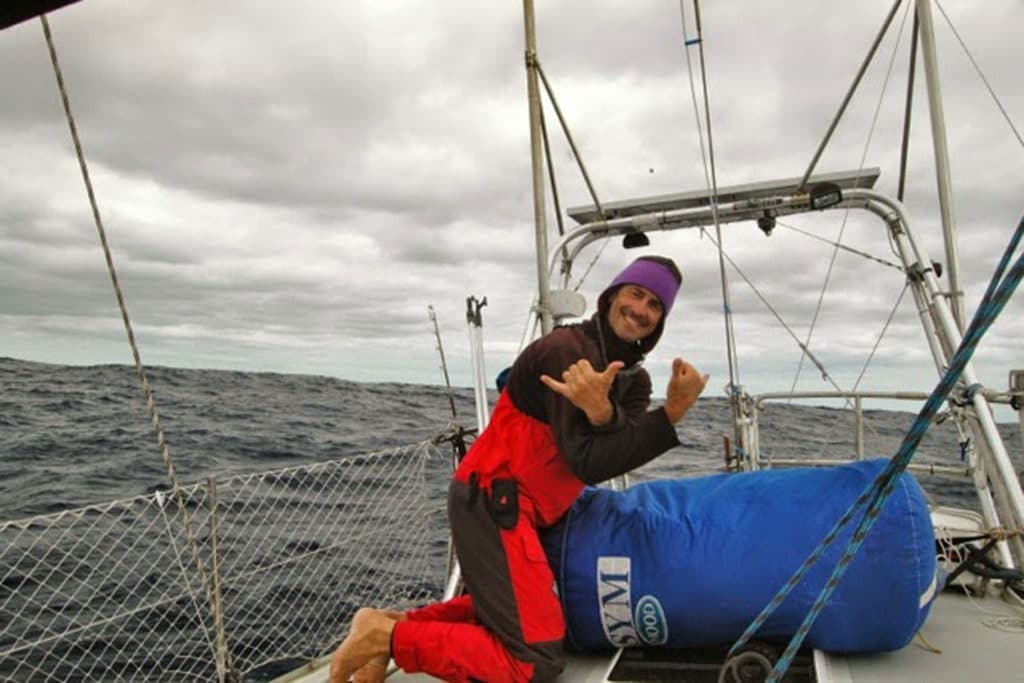
Galactic Sails the Pacific
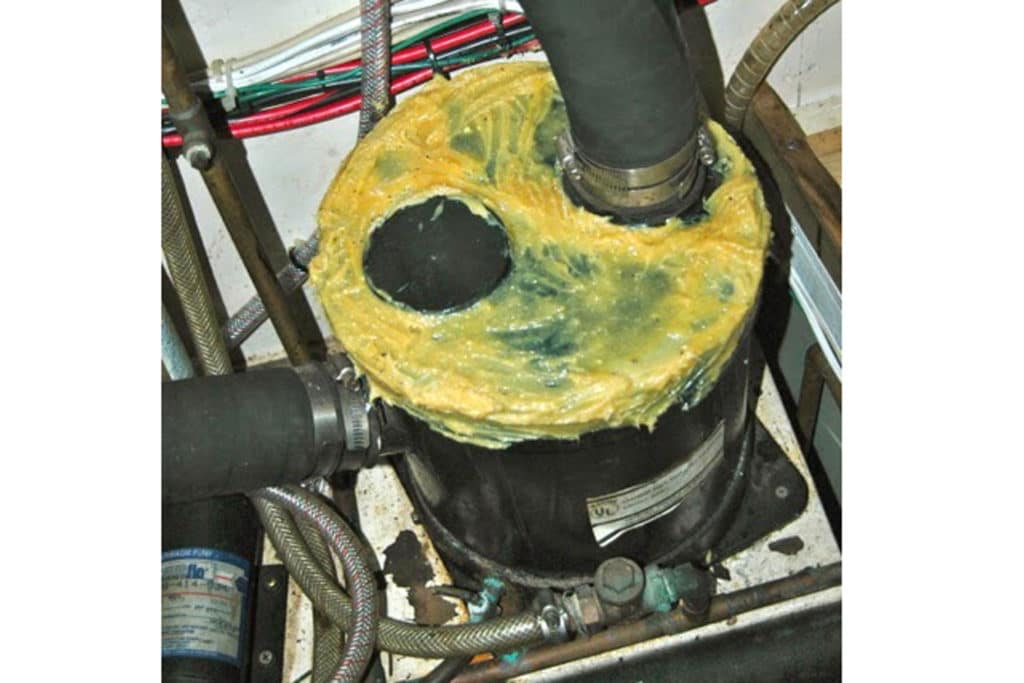
Sailboat Muffler Repair
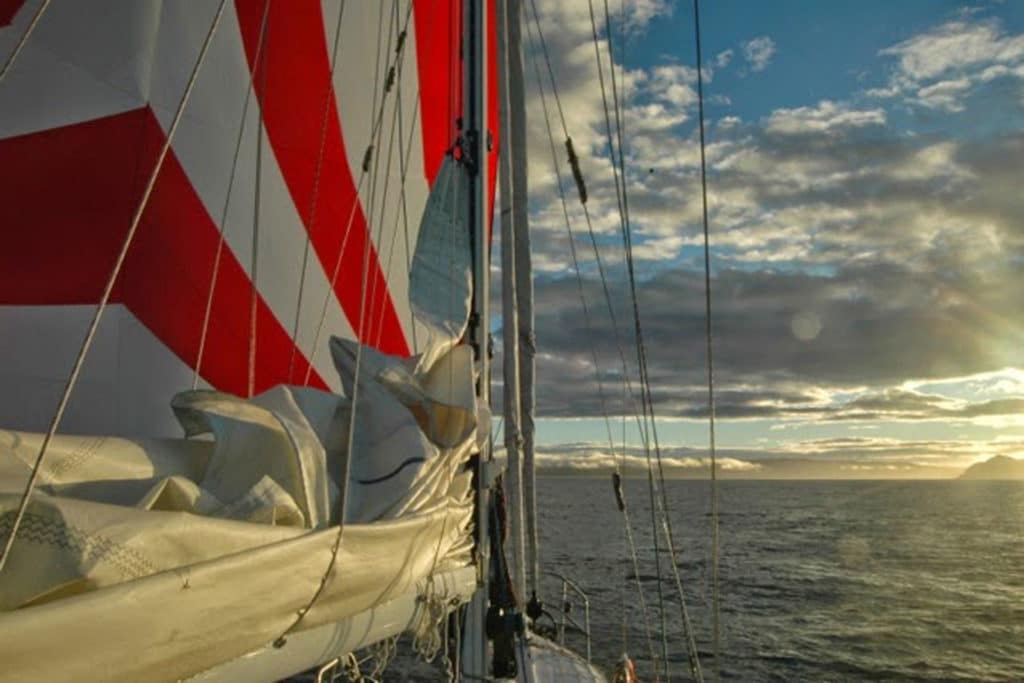
Landfall at dawn
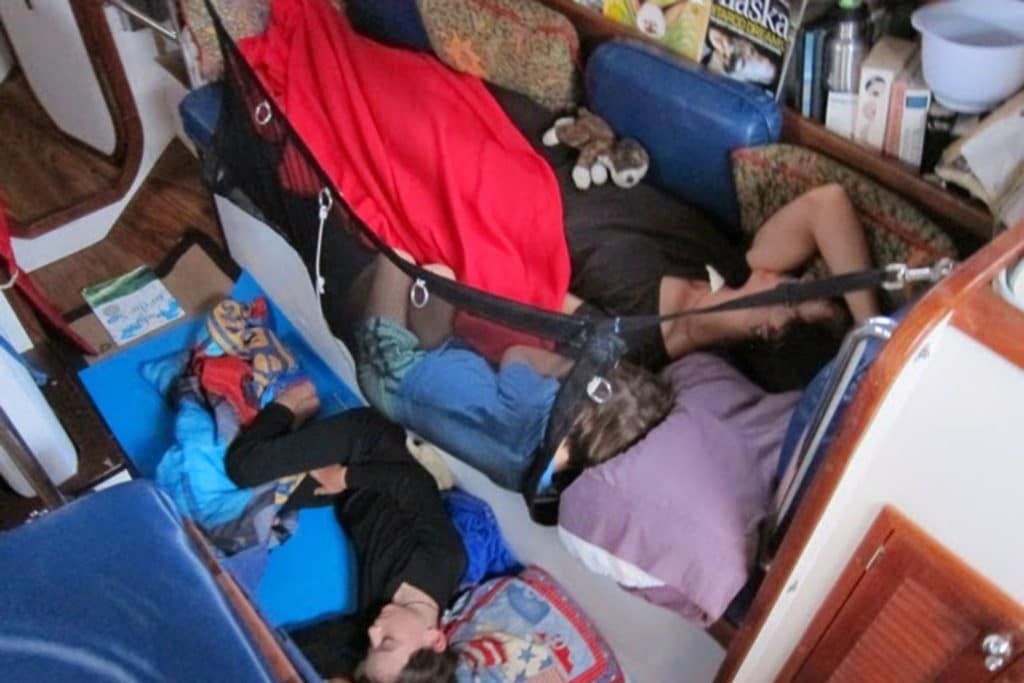
Family Sleeping on a Sailboat
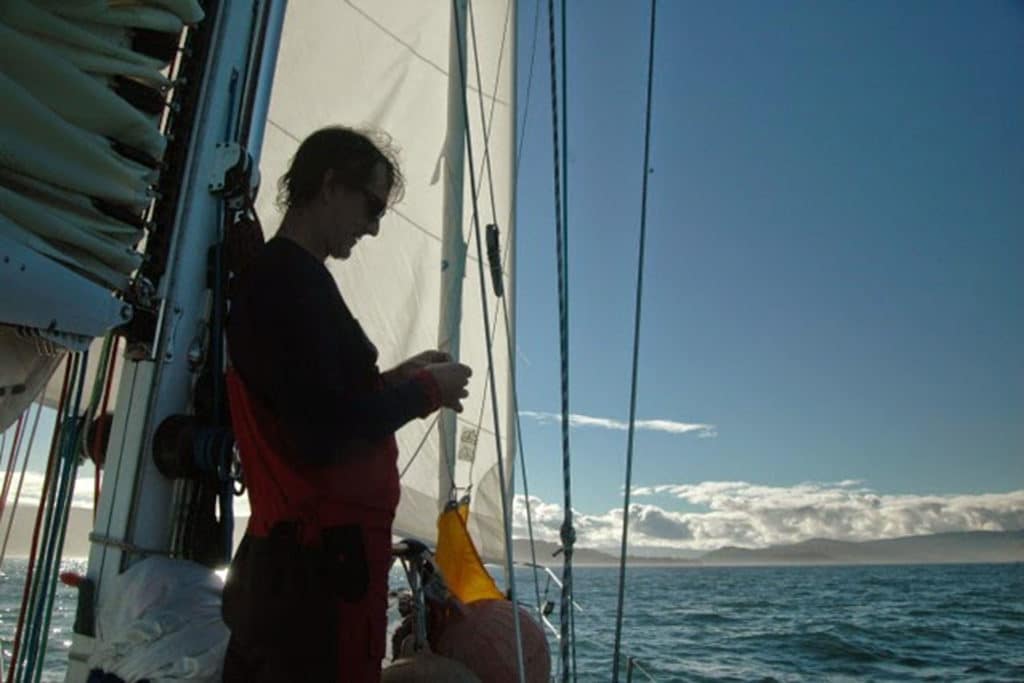
Raising the “Q” flag
